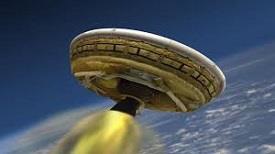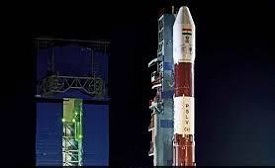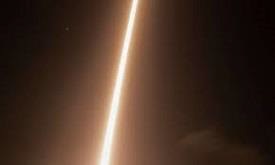
- Appointments
- Awards
- Books & Authors
- Committees
- Deaths
- Defence
- Economic
- Environment
- Finance
- Important Days
- International
- Miscellaneous
- National
- Persons in NEWS
- Places in NEWS
- Regional
- Reports
- Resignations & Retirements
- Science & Technology
- Sports
- April 2018 - Exams Resources
- Current Affairs - Quiz
- Current Affairs - Test
- Current Affairs - PDF
Current Affairs April 2018 - Technology
1 - Satellite launched by ISRO
Satellites launched by ISRO in the last four years and the current year are as follows −
| Name | Launched |
|---|---|
| Communication Satellite | 8 |
| Navigational Satellite | 7 |
| Remote Sensing Satellite | 5 |
| Meteorological satellite | 2 |
| Science Satellite | 1 |
| Technology Demonstration/Student Satellite | 9 |
Communication satellites carried communication transponders in different frequency bands of C, Extended C, Ku, Ka and S-band for telecommunication, broadcast and mobile communication services. Navigation satellites carried navigation payloads in L and S-bands for providing position, navigation and timing services.
2 - NASA successfully tested supersonic Mars landing parachute

NASA successfully launched a Black Brant IX sounding rocket carrying the Advanced Supersonic Parachute Inflation Research Experiment or ASPIRE from NASAs Wallops Flight Facility in Virginia. ASPIRE was testing a parachute for possible future missions to Mars.
ASPIRE is managed by NASAs Jet Propulsion Laboratory (JPL) in Pasadena, California. The test was meant to mimic the conditions that a spacecraft would experience during a Red Planet entry, descent and landing (EDL).
3 - PSLV-C41 successfully launched IRNSS-1I navigation satellite

ISROs Polar Satellite Launch Vehicle PSLV-C41 successfully launched the 1,425 kg IRNSS-1I Navigation Satellite from Satish Dhawan Space Centre SHAR, Sriharikota. PSLV-C41 achieved a Sub-Geosynchronous Transfer Orbit with a perigee and an apogee. IRNSS-1I is the latest member of the Navigation with Indian Constellation (NavIC) system.
NavIC, also known as Indian Regional Navigation Satellite System (IRNSS), is an independent regional navigation satellite system designed to provide position information in the Indian region and 1,500 km around the Indian mainland.
4 - NASAs lunar orbital platform Gateway to start construction

Lunar Orbital Platform-Gateway of NASA will start its operations by 2019. Its construction has begun. NASA had planned earlier to build a crew-tended spaceport in lunar orbit within the first few missions that would serve as a gateway to deep space and the lunar surface.
The gateway could move to support robotic or partner missions to the surface of the moon, or to a high lunar orbit to support missions departing from the gateway to other destinations in the solar system.
5 - NASA launched planet-hunting mission 'TESS'

Transiting Exoplanet Survey Satellite (TESS), the first-of-its-kind mission to discover planets outside the solar system, including some that could support life, was launched by NASA. TESS was launched on a SpaceX Falcon 9 rocket from Cape Canaveral Air Force Station, Florida.
The mission will find exoplanets that periodically block part of the light from their host stars, events called transits. TESS will survey the nearest and brightest stars for two years to search for transiting exoplanets. TESS will settle into a 13.7-day orbit around Earth with the help of a gravitational assist from the Moon.
6 - NASA launched CHESS mission to study matter between stars

The Colorado High-resolution Echelle Stellar Spectrograph, or CHESS 4, was successfully launched on a NASA Black Brant IX sounding rocket from the Kwajalein Atoll in The Republic of the Marshall Islands. The CHESS 4 mission will study the interstellar medium, the matter between stars. The mission focuses on translucent clouds of gas that provide the fundamental building blocks for stars and planets.
The CHESS 4 instrument was developed by the Laboratory for Atmospheric and Space Physics at the University of Colorado, Boulder.